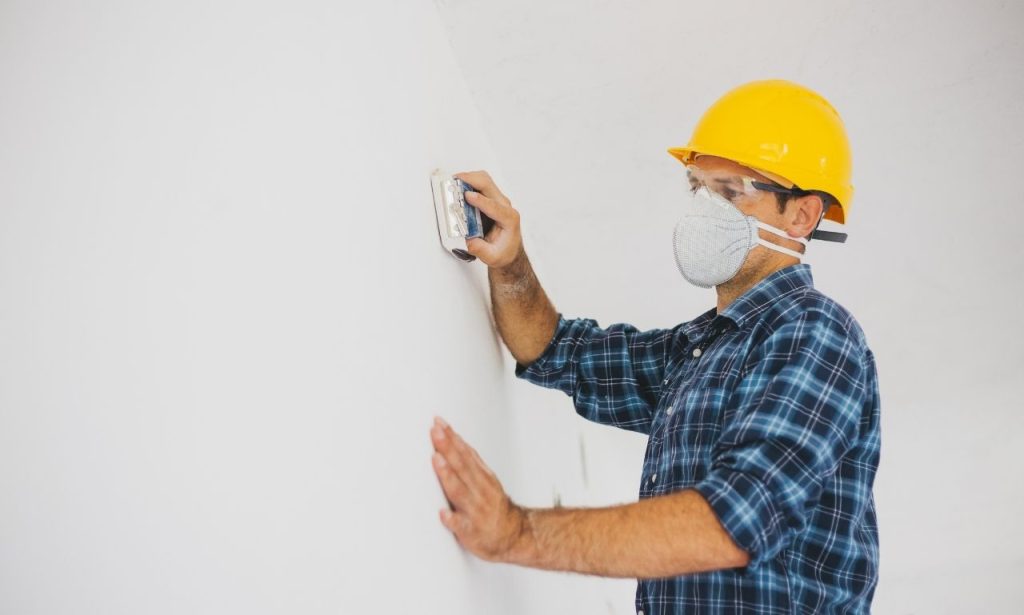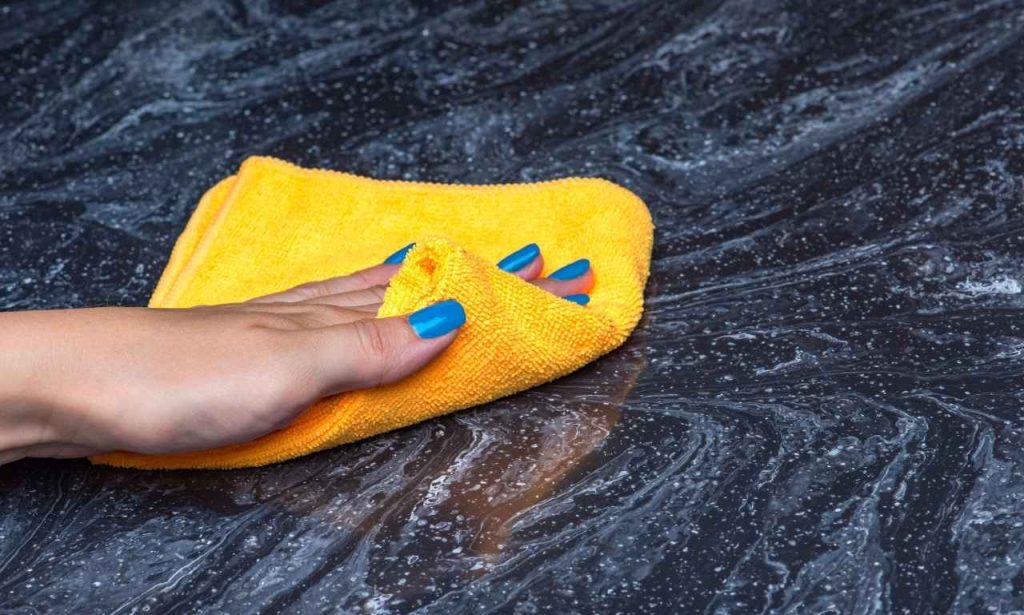Ever stared at those annoying little holes in your walls? Yeah, me too. They’re like tiny eyesores that won’t go away on their own. The frustration is real. I’ve been there countless times in my own home renovations. Those small drywall holes seem minor until you’re trying to sell your house. Then, they become glaring problems. But here’s the good news: fixing them isn’t rocket science. You don’t need to hire an expensive contractor, either. With basic supplies and a little patience, you can handle this yourself. Trust me on this one. I’ve fixed hundreds of these pesky holes over the years. Some were tiny pinholes from the picture hanging. Others were larger anchor holes from shelving units. The techniques work regardless of size. Ready to transform those damaged walls? Let’s jump in and get those walls looking pristine again.
The Current Closet

Take a good, hard look at what you’re dealing with first. How bad is it, really? Those little screw holes might seem insignificant right now. But they add up visually across a wall surface. Trust me. My living room once had 37 nail holes from the previous owner’s gallery wall. Thirty-seven! It looked like wall acne under certain lighting. So, grab a pencil and circle all the damaged spots. This helps you see the full extent of what needs fixing.
Determine the total number of small screw holes that need repair. Check the existence of major anchor holes that need specialized treatment. The assessment process results in future time savings. The assessment phase helps determine which supplies you need before purchase. A hardware store that functions as an emergency store does not exist during project time. Experiencing this situation before proves to be unenjoyable. Making proper preparations seems time-consuming, although it remains essential for success. Proper planning prevents poor performance according to the standard practice of contractors.
Wall Repair – Supplies
Your wall repair project requires multiple essential items for successful completion. The absence of this preparation step will lead to regret during the project’s middle stage. The first priority is to obtain a premium spackle or joint compound. The pre-mixed option provides the best convenience for wall repair needs.
The wall repair process requires at least two sizes of putty knives—a small 2-inch for tight spots and a wider 6-inch for larger areas. Don’t cheap out here. High-quality tools will produce remarkably better results in your project. The necessary tools for this task include sandpaper or sanding sponges with a 150-220 grit rating. Using too coarse tools will result in wall scratches.
When using too-fine sandpaper, it will take an eternity to finish sanding. Dust wiping requires a clean rag. Paper towels fail to provide the necessary quality in this situation. They leave lint behind. When repairing large holes, you should purchase self-adhesive mesh patches. The mesh patches serve as lifesaving tools for repairing holes that measure larger than a quarter.
After completing wall repairs, you must use paint and primer that match the existing colors for touch-up purposes. My secret weapon? An excellent headlamp combined with a work light serves as your essential tool. Shadows conceal the flaws, which will become visible only after the paint has dried. The damage becomes obvious only after the paint has dried, but it is too late to fix anything. A dust mask should also be considered for protection. Your lungs require protection from sanding operations.
How to Fix Small Holes in Drywall
Let’s get down to business. The repair process isn’t complicated, but it requires attention to detail. Different-sized holes need slightly different approaches. The tiny nail holes from picture frames need minimal materials. Those chunky anchor holes from your old TV mount demand more work. However, the principles remain surprisingly similar for both.
Most homeowners can complete these repairs in a single afternoon. No special skills are required. Just follow the steps and don’t rush. That’s where most people mess up—impatience. The drying time between steps isn’t optional. It’s necessary for quality results. I learned this lesson the hard way in my first home.
Rushed repairs always show eventually. The wall texture never quite matches. The paint finish looks different under particular light. So, take your time and do it right the first time. Your future self will be grateful when those walls look flawless.
Small Screw Holes, Step by Step
Those tiny holes seem like no big deal, right? They’re the easiest to fix. We’re talking about holes smaller than ¼-inch in diameter here. The kind left by picture hangers, trim nails, or essential screws. Nothing major. True story – when I bought my second house, every wall was peppered with these.
The seller had displayed family photos on literally every wall surface. I counted over 70 holes just in the main living areas. Took me one weekend to fix them all using these exact steps. Nobody could tell there had ever been damage. The walls looked factory-fresh when I finished.
The repair process for these small holes is straightforward. You don’t need fancy techniques or special tools. Just follow along, and you’ll have perfect results every time. Let’s break it down into manageable steps for you.
Sand & Wipe Away Dust

First things first – prep that surface properly. Grab your sandpaper and lightly rough up the area around the hole. Don’t go crazy here. Gentle pressure is all you need. Sand in small circles around the hole’s perimeter. This removes any raised edges or paper fuzz.
Too much pressure will just make the hole bigger. Been there, done that. Once sanded, wipe everything down with a slightly damp rag. Emphasis on slightly – you don’t want to soak the drywall. This step removes dust that would otherwise mix with your spackle. Those dust particles create tiny bumps in your finished repair.
I always run my fingertips over the area after cleaning. You’d be surprised what you can feel that you can’t see. Any roughness means you need another quicksand. This prep stage seems minor, but it greatly affects your final results.
Fill with Spackle
Now for the actual repair. Grab your putty knife and scoop a small blob of spackle. Less is more at this stage. The rookie mistake is globbing on too much. Hold the knife at roughly a 45-degree angle against the wall. Use firm, consistent pressure as you spread the spackle across the hole. Push the material into the hole ultimately.
Make sure it fills the entire space without air pockets. Then, scrape across the surface to remove excess. I always apply in a crosshatch pattern for best results. The first pass goes horizontally, and the second pass goes vertically. This ensures complete coverage without bubbles. Spread the spackle slightly beyond the actual hole’s edges. About an inch all around is perfect.
This creates a seamless transition to the existing wall. The repair should be nearly flush with the surrounding surface. A slight buildup is fine since you’ll sand it later. Just avoid thick mounds that create unnecessary work. Scrape away any significant excess now to save sanding time later.
Let Dry & Sand
Here’s where patience matters. Let that spackle dry fully before touching it again. Check the container for recommended dry times. Standard spackle needs 1-2 hours minimum. Some fast-dry options might claim 30 minutes. I still give them an hour. The material changes color as it dries. Most go from light gray to bright white when fully dry. It should feel completely hard to the touch.
Once dry, grab your fine sandpaper or sanding sponge. Sand with light circular motions starting at the center. Gradually work outward toward the edges of your repair. The goal is to create a seamless transition that feels perfectly smooth. Keep checking your progress by running your hand over it. Your fingers detect imperfections your eyes might miss. Wipe away sanding dust frequently with a clean rag.
If you find low spots after sanding, apply a second thin coat. Let that dry completely before sanding again. Multiple thin layers always work better than one thick application. That’s a professional secret right there.
Larger Anchor Holes, Step by Step
he holes range from ¼-inch to about 1-inch across. These typically come from drywall anchors, TV brackets, or shelving systems. They require a slightly different approach than the tiny holes. The materials and principles remain similar, but the technique changes somewhat. I encountered this exact issue last year after removing a wall-mounted TV. Six large anchor holes stared back at me like gaping wounds in my living room wall. It’s not a pretty sight. But these bigger holes are still completely DIY-friendly. No need for professional help. The repair process takes a bit longer but follows logical steps. With the right approach, these larger damages disappear completely. Let’s walk through exactly how to handle these challenging repairs step by step.
Sand and Wipe Away Dust

Start the same way as with smaller holes. Sand around the perimeter of the damage. Use medium-grit sandpaper for this initial preparation. The goal is to remove any paper fuzz or raised edges around the hole. These create bumps in your finished repair if left untreated. Sand just enough to smooth the transition zone. Don’t enlarge the hole unnecessarily. After sanding, brush or vacuum out any loose debris inside the hole. Those little particles affect how your patch adheres if left behind. A small brush works perfectly for cleaning out these larger openings.
Then wipe everything down with a clean, slightly damp cloth. This removes the fine dust that sanding creates. Let the area dry completely before moving to the next step. Moisture and spackle don’t play nice together. I learned that lesson the hard way on my first DIY project. Clean, dry surfaces ensure proper adhesion of your repair materials. This preparation phase is crucial for larger holes.
For holes bigger than ½-inch across, mesh patches become your best friend. Cut a piece of self-adhesive mesh slightly larger than the hole. Apply it directly over the damage. Press firmly to ensure it sticks properly all around. This mesh provides crucial structural support for your compound. Without it, larger repairs tend to crack over time.
Make sure the patch lies completely flat against the wall. No bubbles or wrinkles are allowed, as they will cause problems later. Once the mesh is secured, grab your 6-inch putty knife. Load it with joint compound or spackle. Apply the compound over the mesh in thin, even layers. Work from the center outward in smooth strokes. Extend the compound about 2-3 inches beyond the patch edges.
This wider application creates that seamless transition. Let this first coat dry completely according to package directions. Then, lightly sand the surface with a fine-grit sandpaper. Apply a second, thin coat, extending slightly beyond the first. Repeat the process until your repair blends perfectly with the wall. The finished surface should be completely smooth and level when you’re done.
Conclusion
Fixing those annoying drywall holes isn’t nearly as complicated as you thought. Anyone can handle these repairs with essential tools and materials. The key takeaway here? Patience matters more than skill. Take your time between coats of spackle. Allow proper drying before sanding. Don’t rush the process, and your results will speak for themselves. Our covered techniques work consistently across all types of small drywall damage.
I have utilized these specific repair methods in my three successive homes. Over several years, these methods have prevented me from spending thousands of dollars on professional wall repair. These methods have brought me the fulfillment of fixing problems on my own. The experience of witnessing your self-made repairs becomes a genuine source of satisfaction. The walls that appeared earlier appeared to have holes like Swiss cheese? Now they’re flawless. When you work on picture installation or shelving removal, don’t worry about the leftovers since you have the solution. You’ve got this covered. Your walls will become flawless without requiring much work. The method we provided will guide you to accomplish expert-level outcomes in each project.
Also read: Front Porch Decorating Ideas for Spring
FAQs
Most standard spackle products dry within 1-2 hours. Fast-drying varieties may set in as little as 30 minutes.
Yes, priming helps seal the repair and ensures the paint adheres properly for a uniform finish.
Holes larger than 1 inch typically require drywall patches or replacement pieces for proper repair.
Use spray texture in a can to match orange peel or knockdown textures after your repair is complete.


